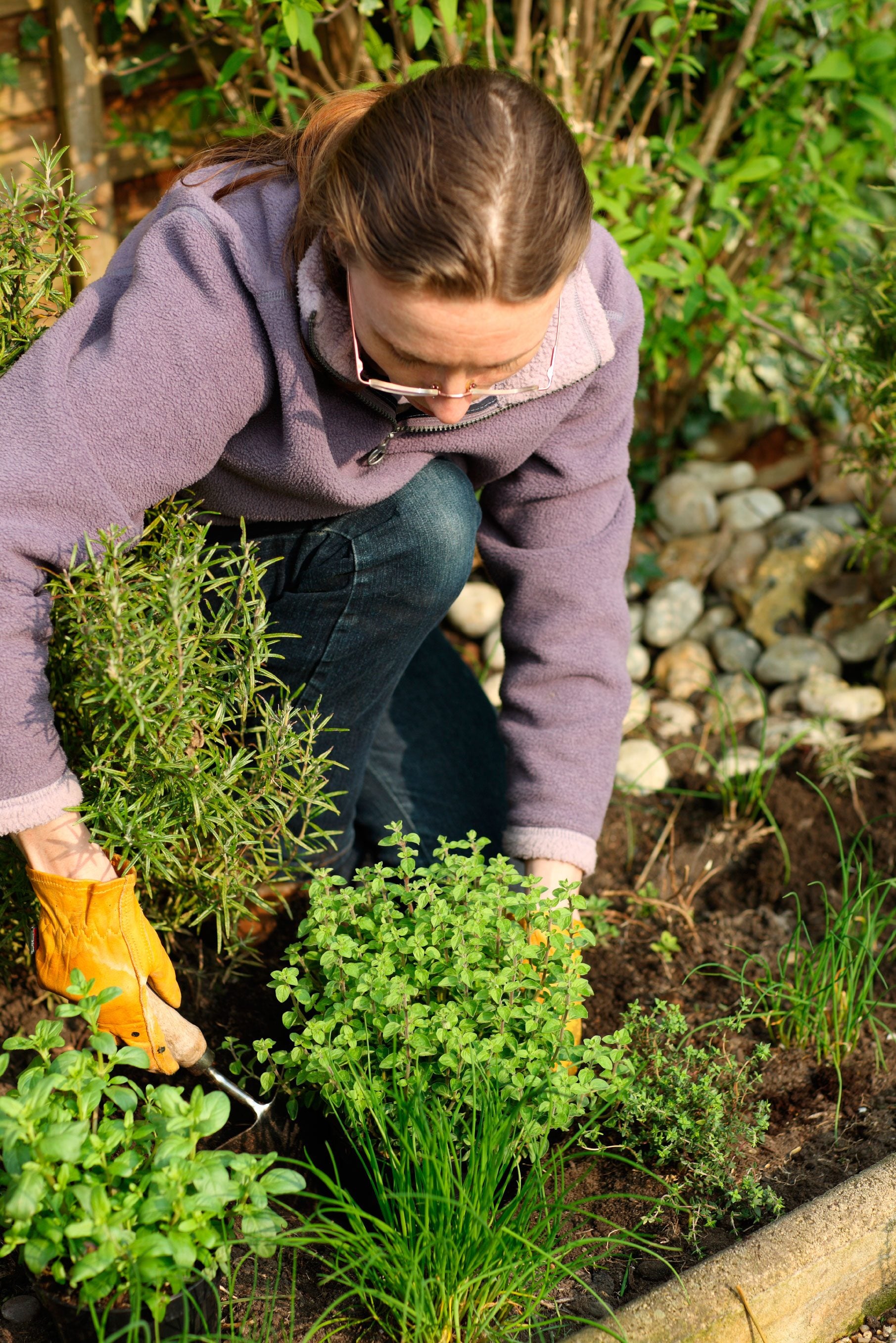Designing An Herb Garden

A well-designed herb garden is a thing of beauty that will serve you well for years to come. Herbs are fairly easy to grow just about anywhere, but there are a few things to consider before you get started.
Tips for Designing an Herb Garden
The first thing you need to do is find a sunny, well-drained location in your yard. Although there are some herbs that do well in the shade, most herbs prefer plenty of sunlight to keep them happy. Your next step is to decide what type of herb garden would best suit your needs. If having herbs for your recipes is your main desire, you will be planting an edible, or culinary herb garden. If you are looking to have a restful place to unwind at the end of the day, a fragrant, or potpourri herb garden might be for you. If you mostly like to use herbs for their healing qualities, then you'll be planting a medicinal herb garden. Not sure? You might want to think about planting a combination of all three types. A trip to your local gardening center is a good way to get a look at the herbs that are available in your area and to get a good look at some of the herbs that aren't familiar. Leafing through a few gardening books and magazines will give you an idea of which herbs go well together and which color schemes you might want to choose for your garden. Once you've decided on which type of herbs you'd like to have growing in your garden, you'll need to decide what style of herb garden you'd like to have in your yard. Herb gardens usually fall into one of two categories: formal or informal. Your choice should be made to match the style of your home and your taste. A formal herb garden is a well-structured, organized garden that is sometimes surrounded by a border of shrubs and has all of its herbs planted neatly in compartmentalized areas, keeping each type of herb separated and on its own. An informal herb garden is just what the name implies -- informal. There are no strict rules to follow. You can mix and match your herbs in whatever style or shape you desire. Of course, there are things to watch out for, such as height, invasiveness, and growing compatibility between the plants chosen, but, all in all, there are no set patterns. After you've chosen the type and style of your garden, it is best to design your herb garden on paper before actually planting anything. Graph paper works really well for this but isn't necessary if you don't have any paper available. Don't worry about the quality of your drawing abilities; you aren't trying to be Van Gogh here. You just want to have a good idea of what your finished garden will look like before you start breaking ground. It's a lot easier to erase a mistake on paper than it is to remove and re-dig your plants once they are settled in the ground. Start by drawing the outline shape of your planting area. Next, you'll need to add any permanent fixtures that exist in the area, like walkways, benches, trees, or patios. Now comes the fun part; start adding your herbs! Use simple symbols like triangles, squares, or circles to mark off each type of herb and where you're planning to plant each one. You might want to make several different plans and then choose your favorite. Once you've made all of your decisions and found a design you love, get out there and start planting!
Sign up for the Gardening Know How newsletter today and receive a free copy of our e-book "How to Grow Delicious Tomatoes".